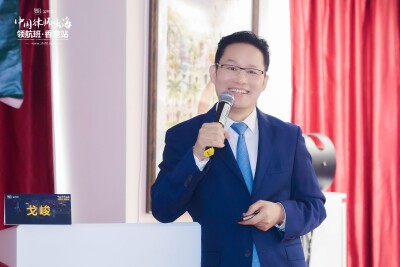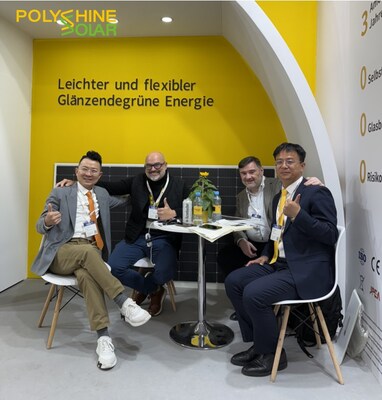 |
SINGAPORE, May 8, 2025 /PRNewswire/ — HTX DeepThink is a flagship market insights column created by HTX, dedicated to exploring global macro trends, key economic indicators, and major developments across the crypto industry. In a world where volatility is the norm, HTX DeepThink aims to help readers “Find Order in Chaos.”
This week, what does Trump’s emerging token plan mean for crypto markets? Why is the Fed holding rates steady? Behind Bitcoin’s rebound, are hidden risks lurking? In this edition of HTX DeepThink, Chloe (@ChloeTalk1) from HTX Research breaks it all down.
Trump Media Group’s Utility Token: A Potential Shift in U.S. Equity Tokenization
On April 30, Trump Media & Technology Group announced it would collaborate with the Truth digital wallet to launch a new utility token called DJT. Initially, DJT will facilitate payments for the Truth+ subscription service, with plans to expand its utility across the Truth ecosystem.
It’s the first time a publicly listed U.S. media company is launching a utility token tied to a real-world product ecosystem, signifying a historic convergence between traditional equities and on-chain asset formats. Although the team has yet to announce a release date, blockchain platform, or tokenomics, the rollout appears to follow Trump’s classic strategy: hype first, details later.
DJT is hitting the market at just the right moment as memecoin mania is cooling and narratives are shifting toward utility and payment integration. Similar to HTX’s recent listing of WLFI’s USD1, demand for “practical crypto assets” is surging. DJT combines powerful political branding with real ecosystem support, offering long-term value potential far beyond that of short-lived meme-driven tokens.
U.S.-China Trade Talks: A Temporary Easing Amidst Persistent Tensions
This weekend, U.S. Treasury Secretary Scott Besant and Trade Representative Jamison Greer will meet with Chinese Vice Premier He Lifeng in Geneva. This meeting, the first high-level U.S.-China trade talks since heightened tensions in spring 2025, signals a potential diplomatic thaw.
Although both sides still dispute who initiated the talks, the meeting alone sends a strong signal of reengagement and diplomatic thawing. With tariffs at historic highs, markets are interpreting the summit as a short-term de-escalation of geopolitical risks—sparking a relief rally in risk assets.
Following the news, Bitcoin rose by approximately 3.6%, briefly surpassing $97,000. This reflects how sensitive capital flows remain to macro-level easing signals. While structural differences between the two nations are far from resolved, the current window of policy détente may offer a short-term liquidity boost for digital assets, gold, and tech stocks.
Powell Throws : “Now Is Not the Time to Cut Rates”
On May 8, the Fed held interest rates steady at 4.25%–4.50% for the third consecutive meeting. While it was widely expected, Fed Chair Jerome Powell struck a noticeably more cautious tone during the press conference:
- “Now is not the time for us to lead with a rate cut.”
- “The cost of waiting is relatively low.”
- “Whether we cut this year depends on how things develop.”
The Fed is currently caught in a “dual bind”: on one hand, disinflation has stalled, with PCE and CPI both above the 2% target. On the other, the central bank’s fiscal position is deteriorating. A 25–30 bps rate cut could shave $20 billion off annual income, further reducing remittances to the Treasury and raising concerns over the Fed’s policy independence.
As a result, despite markets currently pricing in three rate cuts in 2025, the Fed is more likely to take a “data-driven, delayed transition” approach.
Bitcoin’s Market Dynamics: Macroeconomic Data to Dictate Direction
Despite BTC rebounding to around $99,000 on geopolitical and monetary optimism, the options market is not confirming a strong directional bias. Deribit data shows implied volatility on June and July calls rising only modestly, while 25d risk reversals remain neutral to slightly bearish, and skew curves are relatively flat. Notably, large Gamma exposures are clustered around the $95,000–$100,000 range, indicating that BTC is currently trapped in a “high-volatility, low-conviction” zone awaiting macro catalysts.
If CPI and jobs data for May–June remain hot, the Fed may push back on rate cut expectations—risking a BTC pullback. Conversely, if inflation cools and unemployment ticks up, Powell may pivot dovishly, providing a green light for BTC to break out of its volatility compression range and resume its bullish trend.
*The above content is not an investment advice and does not constitute any offer or solicitation to offer or recommendation of any investment product.
About HTX Research
HTX Research is the dedicated research arm of HTX Group, responsible for conducting in-depth analyses, producing comprehensive reports, and delivering expert evaluations across a broad spectrum of topics, including cryptocurrency, blockchain technology, and emerging market trends.












